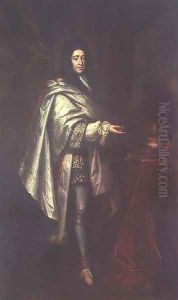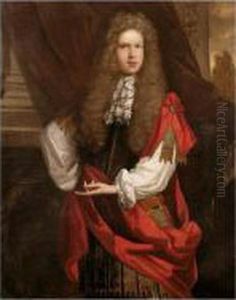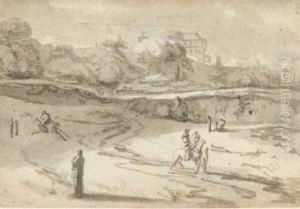Jan van der Vaart Paintings
Jan van der Vaart was a Dutch artist born in Haarlem in 1647. He was a versatile artist, known for his contributions to the Dutch Golden Age of painting, particularly in the realms of portrait, still life, and genre scenes. Van der Vaart's early life is somewhat obscure, but it is believed that he was initially trained in Haarlem, where the influence of prominent Haarlem artists such as Frans Hals may have touched his developing style.
Van der Vaart's career took a significant turn when he moved to London around the year 1674. This move was likely motivated by the opportunities the city offered, as London was becoming a vibrant center for arts and commerce. In England, he became known for his portrait work, painting members of the aristocracy and the burgeoning merchant class. His style was characterized by a meticulous attention to detail and a keen ability to capture the personality and stature of his sitters.
Despite his success as a portraitist, Jan van der Vaart continued to explore other genres. He produced still lifes that were celebrated for their realism and intricate composition, as well as genre scenes that depicted everyday life with a sense of immediacy and authenticity. His work during this period reflects the influence of Dutch Golden Age painting, yet it also demonstrates an adaptation to the tastes and preferences of his English patrons.
Towards the latter part of his career, van der Vaart's work began to show signs of the changing artistic trends of the early 18th century. He adapted his style to meet the evolving tastes of his clientele, integrating elements of the Rococo style that was becoming popular at the time. This period of his work is marked by a lighter palette and a more fluid handling of paint.
Jan van der Vaart died in London in 1721. His legacy is that of a bridge between Dutch Golden Age painting and the emerging English art scene of the 18th century. His work is held in high regard, with pieces in the collections of major museums and galleries, illustrating his significant contribution to the art of his time.












